31 Unconventional Arenas: Stadiums Built Where You'd Least Expect
Forget everything you thought you knew about where sports happen. While most stadiums settle predictably into urban landscapes, a select few defy gravity, geography, and all expectations. Imagine colossal arenas carved into mountainsides, floating gracefully on water, or nestled amidst ancient ruins. These aren't just venues; they are monuments to human ingenuity, pushing the boundaries of engineering and design. We've scoured the globe to uncover the most audacious and astonishing examples, expanding our mind-blowing list to 31 incredible stadiums that will leave you questioning what's possible. Get ready to journey from remote island pitches to structures that literally touch the sky, proving that passion for sport knows no bounds—and no place is too improbable for a game.
1. The Ice Palace: A Frozen Wonder in the Heart of Siberia

Deep within the icy expanse of Siberia lies the Ice Palace, a testament to human perseverance against the harshest of climates. Built in the city of Khabarovsk, this stadium is a marvel of engineering, designed to withstand extreme temperatures while providing a warm and inviting environment for hockey enthusiasts. The Ice Palace is not just about sports; it serves as a cultural hub, hosting concerts and community events that bring warmth to the cold Siberian nights. The stadium's construction involved innovative techniques to manage the permafrost, ensuring stability and safety. Its presence in such an isolated area highlights the power of sports to bring people together, creating a sense of community in the most unexpected places.
2. The Floating Field: A Soccer Pitch at Sea

In the coastal village of Koh Panyee, Thailand, a floating soccer field defies the limitations of geography. Built by local fishermen on the water, this unique field is a symbol of the community's passion for soccer. The floating field is made from old wood and discarded fishing materials, demonstrating the villagers' resourcefulness and love for the sport. Despite its unconventional setting, the field has become a breeding ground for talent, with local teams gaining national recognition. This floating stadium challenges traditional notions of what a sports arena should be, offering a breathtaking view of the sea and a testament to the spirit of innovation.
3. The Desert Mirage: Qatar's Al Janoub Stadium

Emerging from the sands of the Qatari desert, Al Janoub Stadium is a futuristic vision brought to life. Designed by the late Zaha Hadid, this stadium blends cutting-edge architecture with cultural motifs, drawing inspiration from the sails of traditional dhow boats. Located in Al Wakrah, the stadium's innovative cooling system allows it to host events year-round, despite the searing desert heat. Al Janoub is a centerpiece of Qatar's efforts to redefine its landscape through sports, symbolizing the nation's ambition and forward-thinking approach. Its presence in the desert challenges perceptions of where large-scale sporting events can thrive, proving that even the most arid landscapes can host world-class facilities.
4. The Mountain Fortress: Estadio BBVA Bancomer
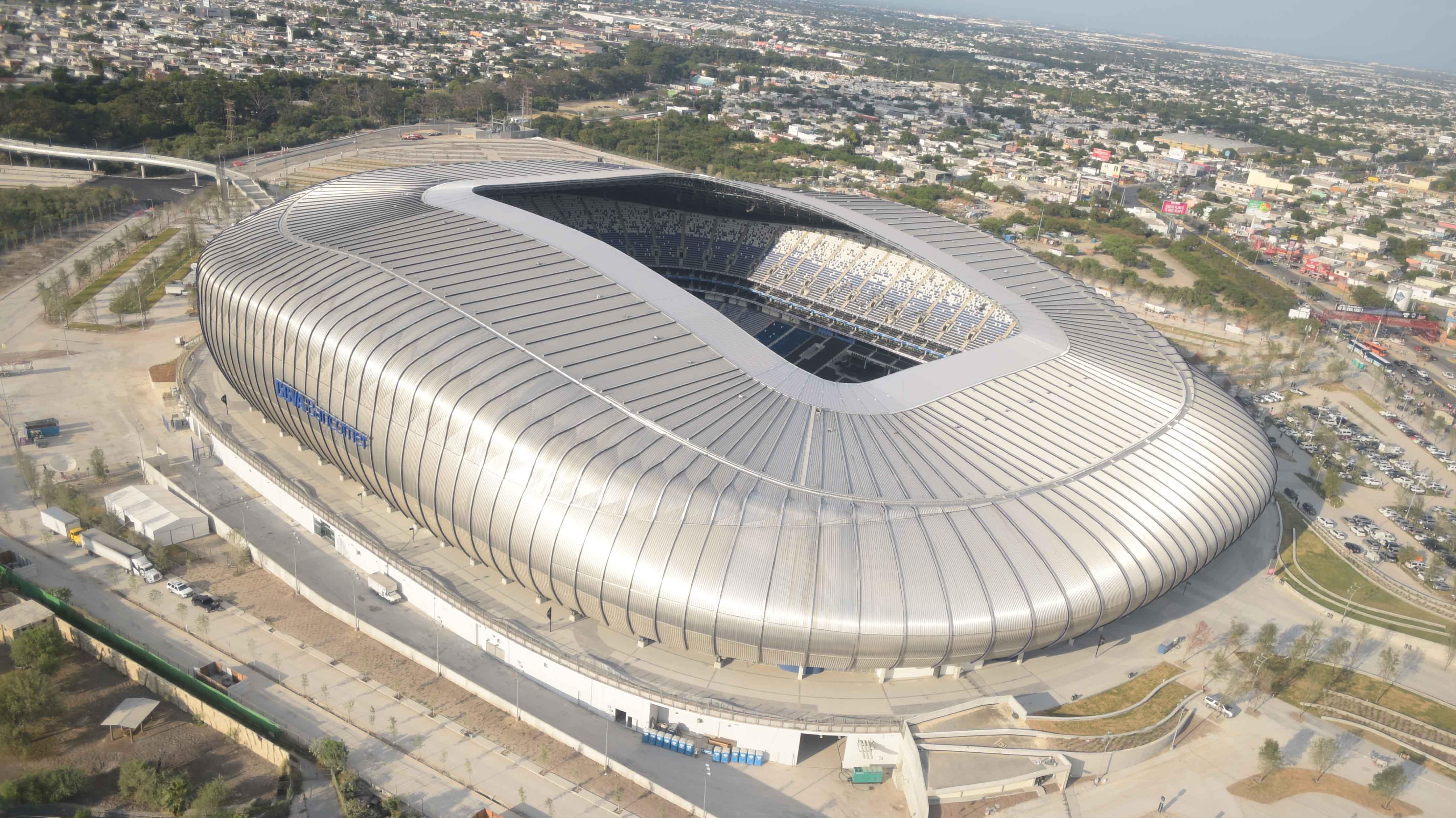
Nestled at the foot of the Sierra Madre Oriental in Monterrey, Mexico, Estadio BBVA Bancomer is a striking blend of natural beauty and modern design. This stadium, home to the C.F. Monterrey soccer team, offers breathtaking views of the surrounding mountains, providing spectators with a unique visual experience. The stadium's design incorporates sustainable practices, utilizing natural ventilation and solar panels to minimize its environmental impact. Estadio BBVA Bancomer stands as a testament to the harmonious integration of architecture and nature, showcasing how sports venues can enhance rather than detract from their natural surroundings.
5. The Jungle Arena: Arena da Amazônia
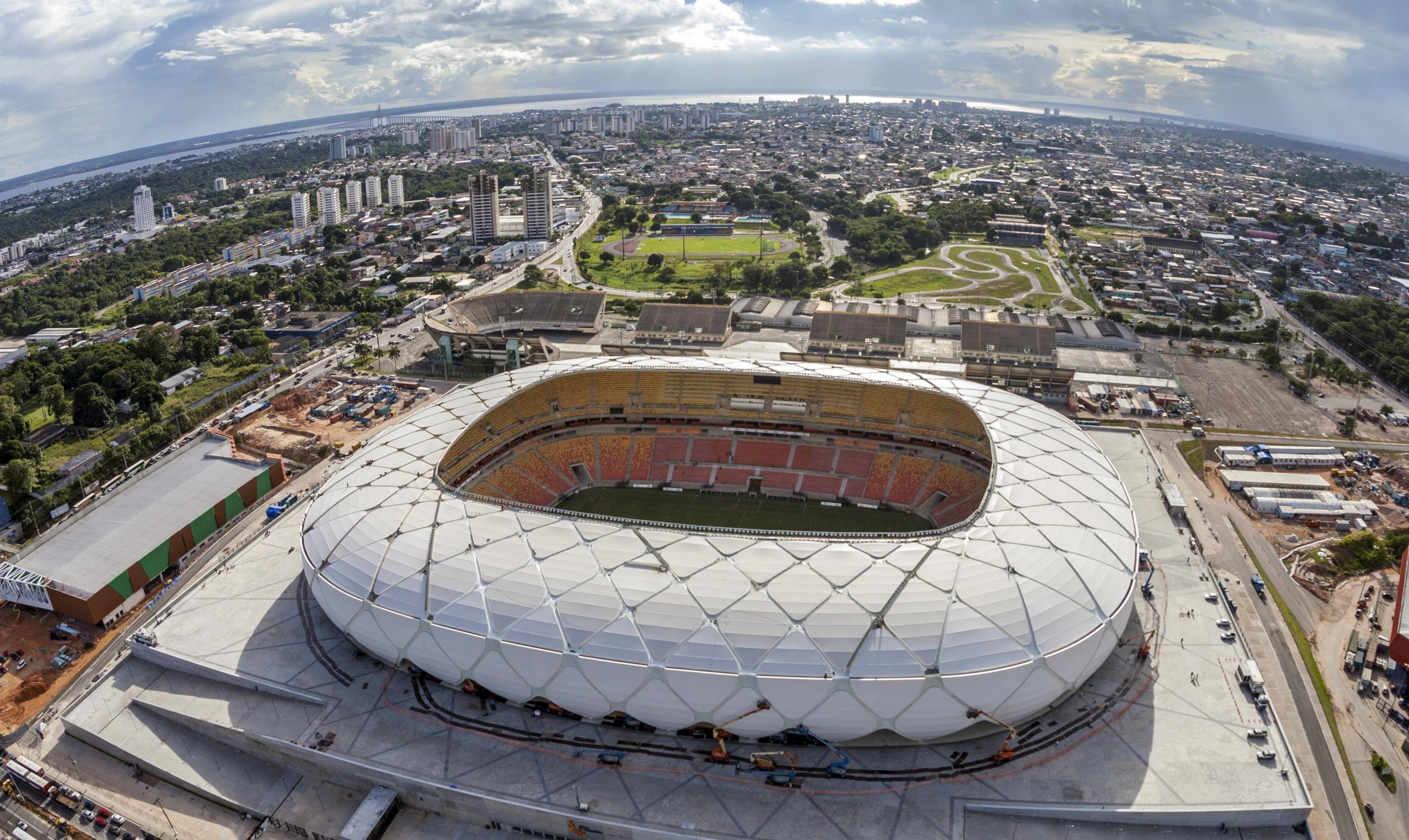
In the heart of the Amazon rainforest, Arena da Amazônia is a beacon of modernity amid lush greenery. Located in Manaus, Brazil, this stadium was built for the 2014 FIFA World Cup and has since become a symbol of the region's growth and development. The stadium's design reflects the natural beauty of its surroundings, with a facade inspired by indigenous basket weaving. Constructing such a large-scale venue in the rainforest posed significant challenges, requiring careful planning to minimize environmental impact. Arena da Amazônia is a testament to the possibility of sustainable development, proving that even the most remote locations can host world-class sports facilities.
6. The Urban Oasis: Singapore's National Stadium
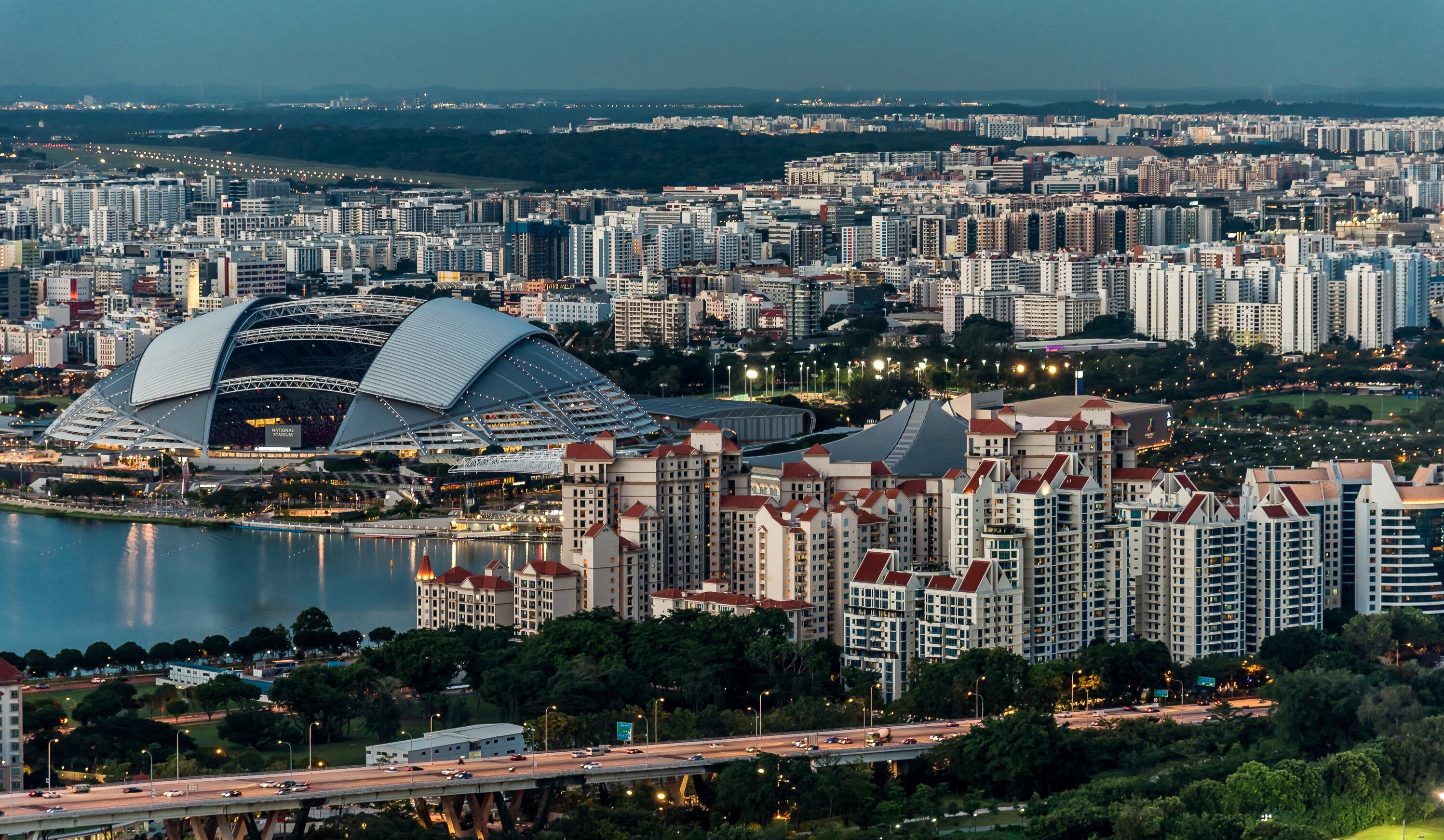
Singapore's National Stadium is a marvel of engineering and design, situated in the heart of one of the world's most densely populated cities. This stadium features a retractable roof and a seating configuration that can be adjusted to accommodate a variety of sports and events. The stadium is part of the Singapore Sports Hub, a massive complex that includes an aquatic center, a water park, and retail outlets. Its location in the urban landscape of Singapore challenges the notion that stadiums must be isolated structures, instead integrating seamlessly with the city's infrastructure. The National Stadium exemplifies how sports venues can enhance urban life, providing a multifunctional space that serves both athletes and the community.
7. The Alpine Arena: Stade de Suisse
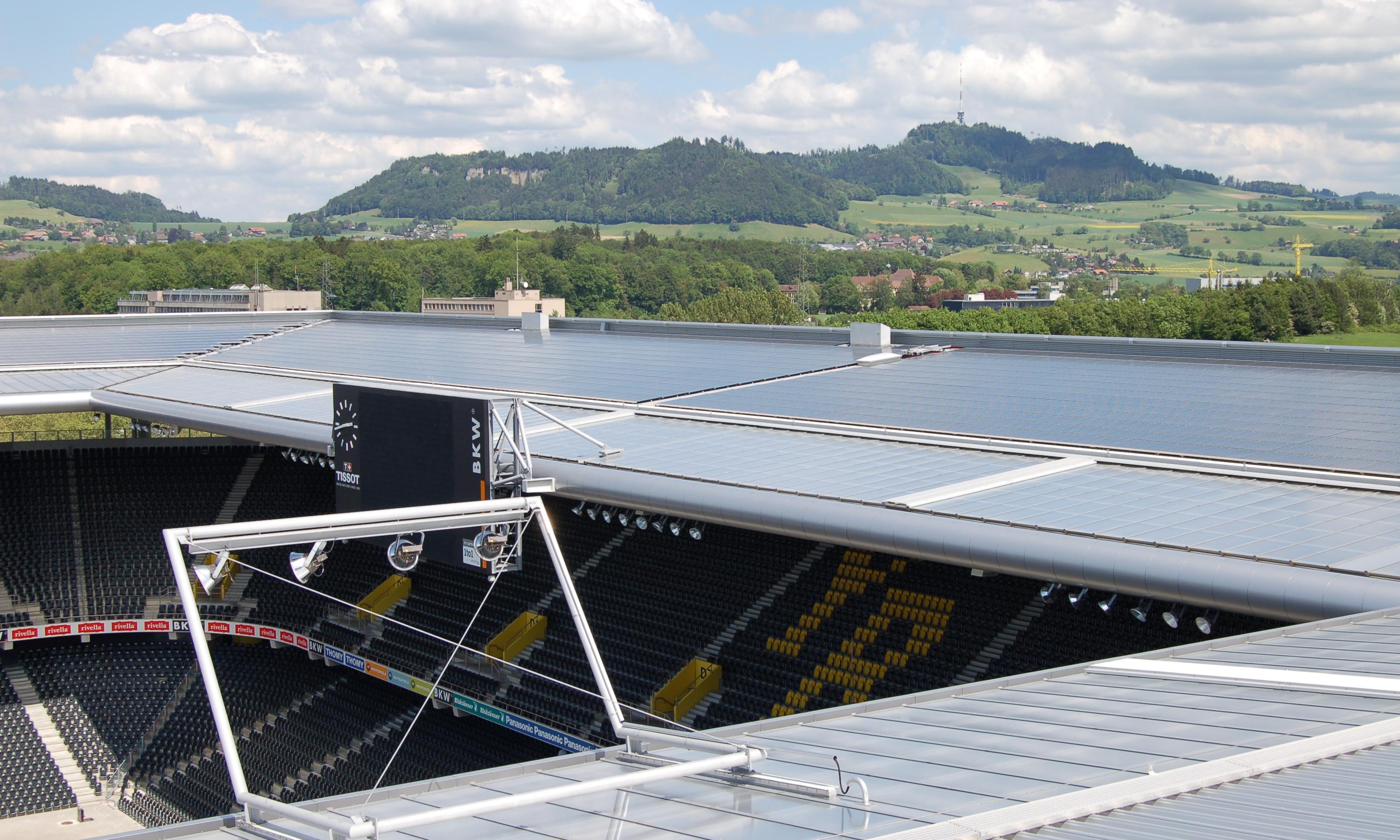
High in the Swiss Alps, the Stade de Suisse in Bern offers a unique combination of sports and nature. This stadium, home to the BSC Young Boys football team, is renowned for its picturesque setting and sustainable design. The stadium's roof is covered with solar panels, making it one of the most environmentally friendly sports venues in the world. Its location in the Alps provides a stunning backdrop for matches, attracting visitors from around the globe. The Stade de Suisse demonstrates how sports arenas can coexist with natural landscapes, offering a model for future developments in sensitive environments.
8. The Island Stadium: Aloha Stadium

Located on the island of Oahu, Hawaii, Aloha Stadium is a unique blend of tropical paradise and sports culture. This stadium has hosted a variety of events, from football games to concerts, and is a beloved part of the local community. Its design reflects the island's laid-back atmosphere, with open-air seating and views of the surrounding landscape. Aloha Stadium challenges traditional notions of stadium design, proving that sports venues can be both functional and a reflection of their cultural context. Its presence on an island highlights the versatility of stadiums, showing that they can thrive in diverse environments.
9. The Historic Revival: Rome's Stadio dei Marmi
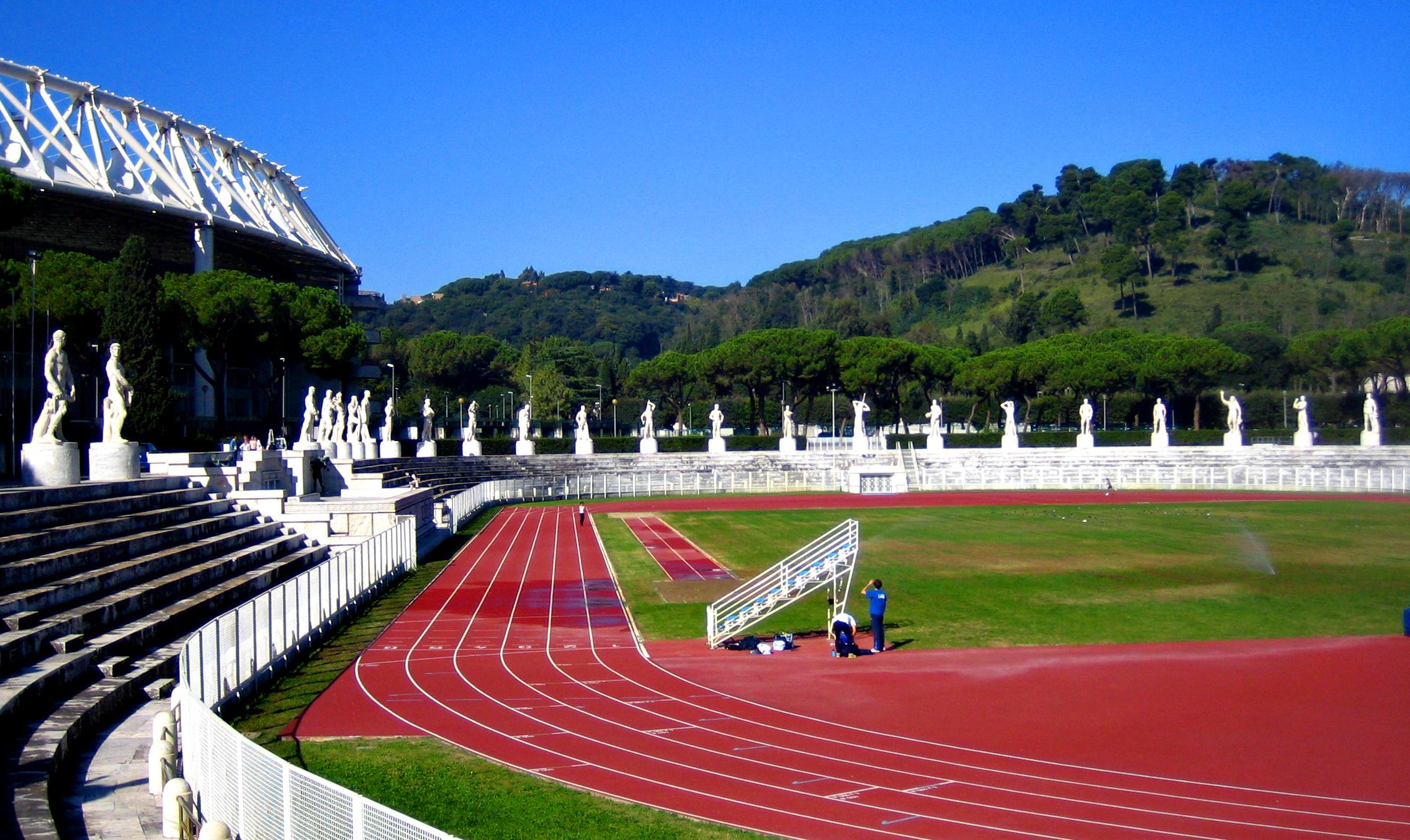
In the heart of Rome, Stadio dei Marmi is a testament to the city's rich history and architectural heritage. Built in the 1930s, this stadium is surrounded by 60 marble statues representing different sports, creating a unique blend of art and athletics. The stadium's design reflects the grandeur of ancient Rome, with its classical architecture and use of marble. Despite its historic roots, Stadio dei Marmi remains a vibrant part of the city's sports culture, hosting athletic events and serving as a training ground for local athletes. Its presence in Rome challenges the notion that stadiums must be modern structures, proving that they can be both historic landmarks and functional sports venues.
10. The Cliffside Coliseum: Estadio Municipal de Braga

Carved into the side of a mountain in Portugal, Estadio Municipal de Braga is a stunning example of architectural ingenuity. Designed by Eduardo Souto de Moura, this stadium features a unique design that incorporates the natural rock face into its structure. The stadium's open sides offer breathtaking views of the surrounding landscape, creating a dramatic setting for soccer matches. Estadio Municipal de Braga challenges traditional stadium design, proving that sports venues can be both functional and works of art. Its integration with the natural environment highlights the potential for innovative design in challenging locations.
11. The Arctic Arena: Tromsø's Alfheim Stadion
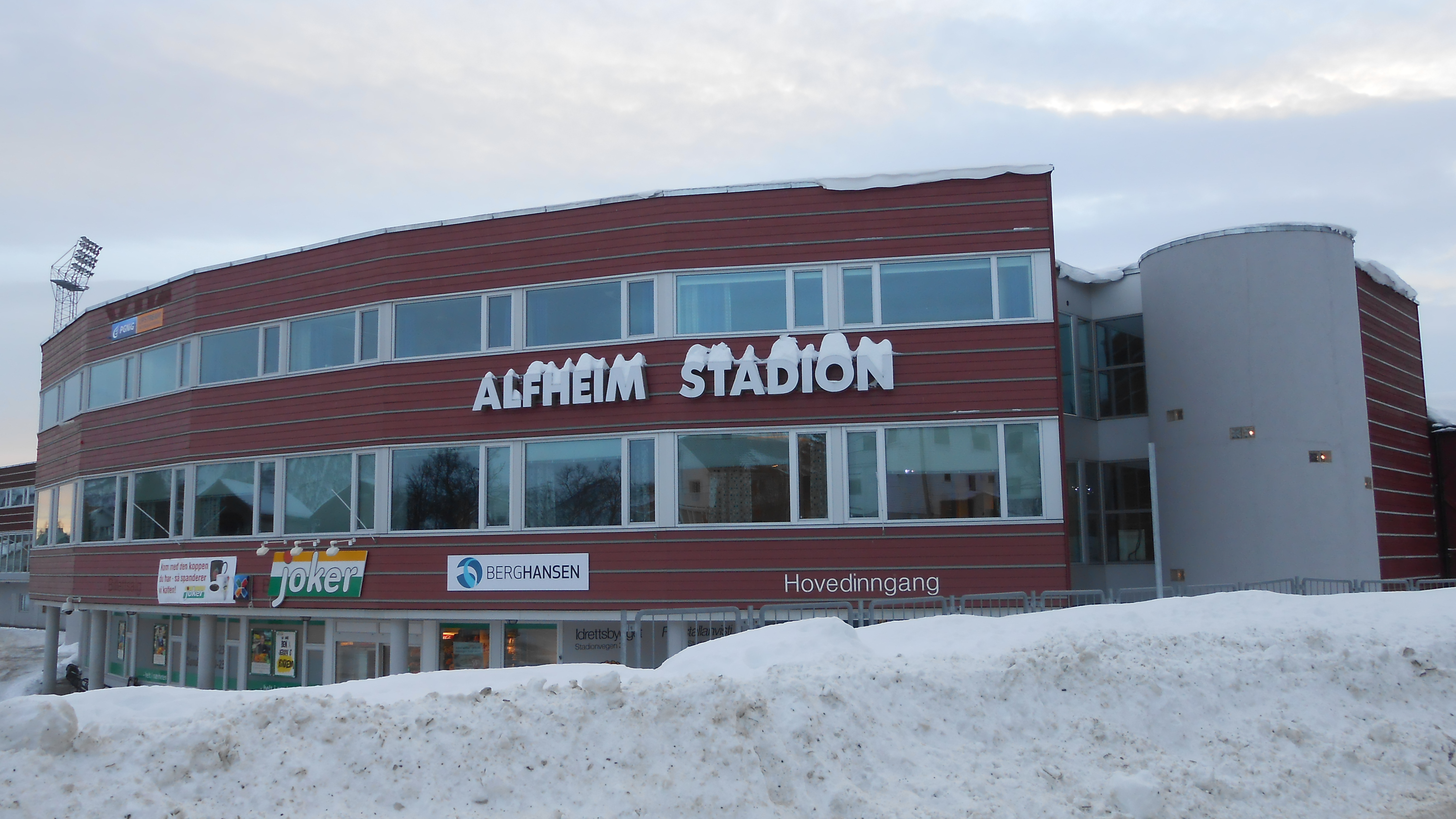
Located above the Arctic Circle in Norway, Alfheim Stadion is a testament to the resilience of sports culture in extreme conditions. This stadium, home to Tromsø IL, is one of the northernmost professional sports venues in the world. Its location presents unique challenges, with harsh weather conditions and limited daylight during the winter months. Despite these challenges, Alfheim Stadion is a vibrant part of the local community, hosting soccer matches and other events throughout the year. Its presence in the Arctic challenges traditional notions of where sports venues can thrive, proving that passion for sports knows no bounds.
12. The Coal Mine Stadium: Stadion Miejski, Poland
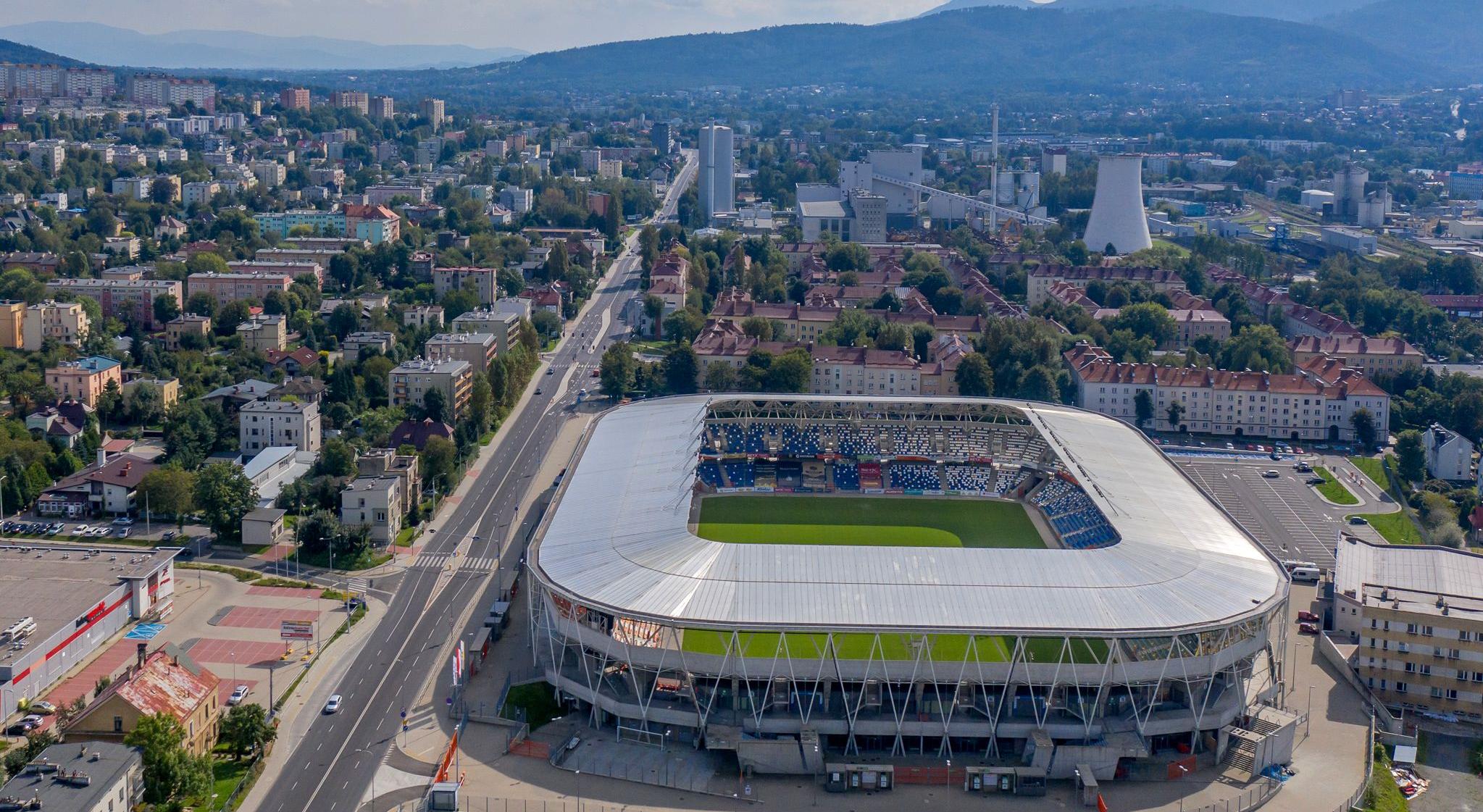
Built directly over an active coal mine, Stadion Miejski in Bełchatów, Poland, is an engineering marvel that showcases how sports infrastructure can adapt to industrial landscapes. Unlike most stadiums, which rely on stable foundations, this venue was constructed atop land that constantly shifts due to ongoing mining activity beneath the surface. To counteract potential ground instability, engineers incorporated advanced structural reinforcements that allow the stadium to absorb minor tremors and movement. Despite its industrial surroundings, the stadium has been a hub for Polish league football, serving as the home ground for GKS Bełchatów. The contrast between the green pitch and the coal-heavy terrain that defines the city makes it one of the most visually striking stadiums in the country. The nearby cooling towers and mining facilities create a unique backdrop that reminds spectators of the region’s deep connection to energy production. The stadium’s construction also reflects Poland’s efforts to modernize industrial towns by introducing cultural and sporting venues, proving that even locations defined by heavy industry can find a balance between work and play.
13. The Cliffside Cricket Pitch: Flic en Flac, Mauritius
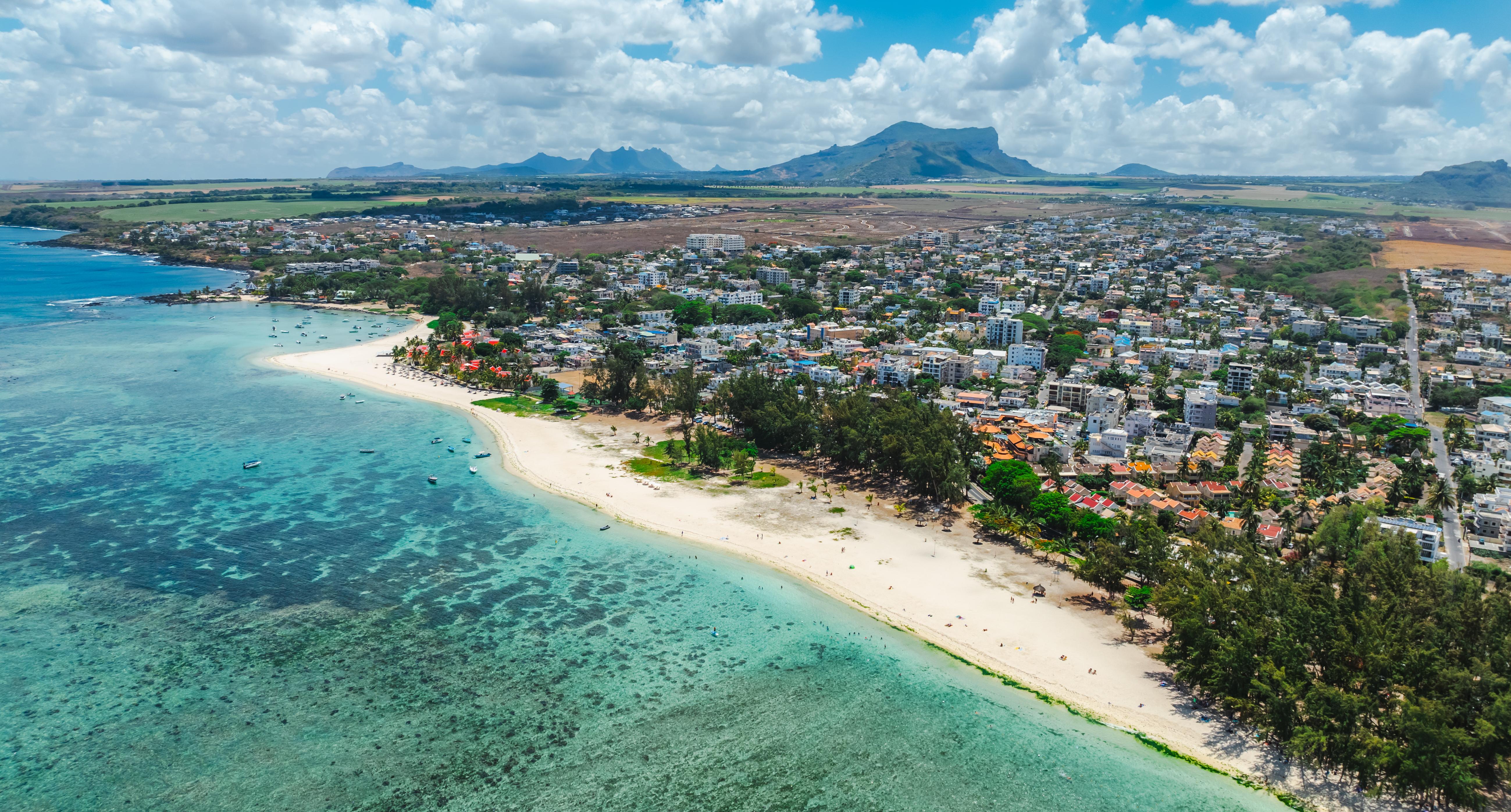
Cricket in Mauritius takes on a breathtaking dimension at Flic en Flac, where local players bat and bowl on a cliffside pitch overlooking the endless expanse of the Indian Ocean. This unique playing field is not part of a traditional stadium but rather a rugged outcrop that has been leveled and adapted for informal matches. With sheer drops just meters away from the boundary line, the stakes are high—not just for the players, but for any ball that goes over the edge. The location itself presents natural challenges that make the game even more unpredictable. High-altitude ocean winds dramatically alter ball trajectories, requiring players to adjust their techniques to account for sudden gusts that can send a well-aimed shot flying in an unexpected direction. Fielding also becomes an adventure, as retrieving a ball that’s been hit too far may involve scrambling down rocky inclines. Despite these challenges, the cliffside cricket pitch remains an iconic spot for local matches and visiting cricket enthusiasts. Its spectacular setting provides a stunning contrast to the lush greenery and turquoise waters of Mauritius, making it one of the most scenic places in the world to enjoy the sport.
14. The Glacier Stadium: Tasiilaq Football Field, Greenland

Playing soccer on a glacier may sound like something out of a fantasy novel, but in Tasiilaq, Greenland, it’s a reality. This isolated football field, marked only by faint boundary lines in the snow, sits amid towering ice-capped peaks in one of the most remote inhabited places on Earth. The stark white landscape provides an unforgettable backdrop for matches, making every game feel like a battle against both an opponent and the elements. Tasiilaq’s football season is defined by its extreme conditions. The subzero temperatures make the ground as hard as concrete, demanding special footwear to maintain traction on the frozen surface. Players often have to deal with blizzards that can reduce visibility to just a few meters, adding an unpredictable element to every pass and shot. And if the icy winds weren’t enough, matches are occasionally paused when a wandering polar bear is spotted nearby—turning the referee’s role from game official to emergency lookout.
15. The Ancient Amphitheater Pitch: Pula Arena, Croatia

Imagine stepping onto a field where gladiators once fought for survival. That’s the experience of playing at Pula Arena in Croatia, one of the best-preserved Roman amphitheaters in the world. Built in the 1st century AD under Emperor Vespasian, this UNESCO-listed marvel now hosts modern sporting events, bringing together the old and the new in a stunning display of historical continuity. While the stadium primarily serves as a venue for concerts and cultural festivals, it occasionally transforms into an open-air futsal or football pitch. With its towering limestone walls and massive stone arches, the arena provides an unmatched ambiance that makes every match feel like a moment in history. The acoustics, once designed to amplify the roars of ancient spectators, now echo with the cheers of football fans who come to witness this extraordinary sporting spectacle.
16. The Highway Stadium: Henningsvær Stadion, Norway

Tucked away on a tiny rocky island in Norway’s Lofoten archipelago, Henningsvær Stadion is one of the most isolated football fields in the world. This breathtaking venue is surrounded on all sides by the icy waters of the Norwegian Sea, with towering mountains providing a dramatic backdrop. But what makes this stadium truly stand out is its location right next to a main road, where passing drivers—and even boats navigating the nearby fjords—often stop to admire the surreal sight of a full-sized football pitch seemingly dropped into the middle of the rugged landscape. Unlike conventional stadiums, Henningsvær Stadion has no grandstands, floodlights, or locker rooms. Instead, it is a simple yet well-maintained artificial turf field designed for local teams and youth players. The edges of the field are lined with jagged rocks, making it essential for players to keep the ball in play—otherwise, someone might have to fish it out of the ocean. Despite its remote location, the stadium has become a social media sensation, attracting football fans and travelers who make the pilgrimage just to witness a match in this extraordinary setting. It’s a reminder that sports don’t need massive arenas to create magic—sometimes, a simple field in an awe-inspiring location is enough to leave a lasting impression.
17. The Volcanic Stadium: Estadio Guillermo Prospero Trinidad, Aruba
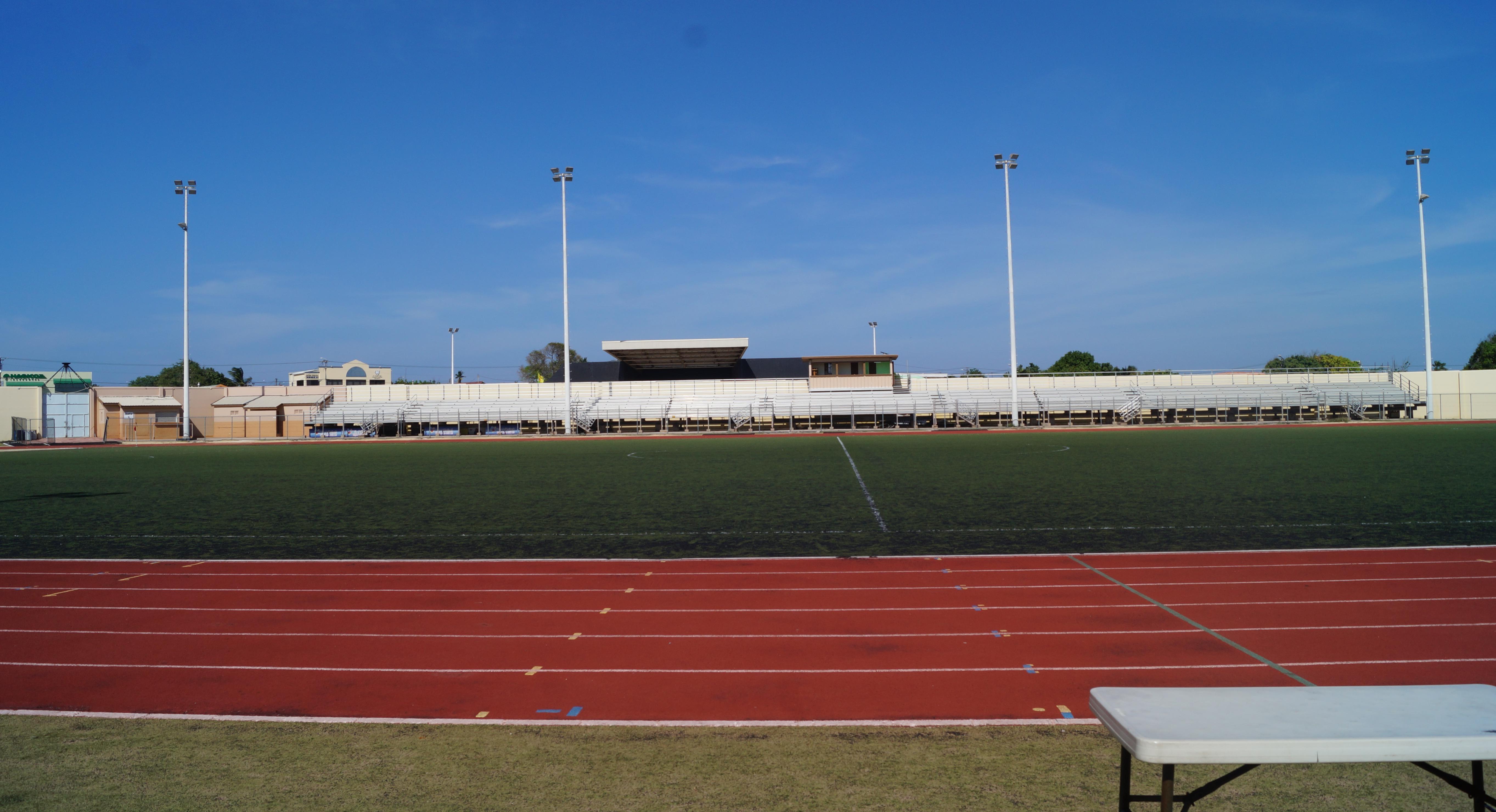
In the heart of the Caribbean, Aruba’s Estadio Guillermo Prospero Trinidad stands as a unique sports venue set against the backdrop of ancient volcanic formations. Unlike most stadiums, which are built on standard soil or grass, this field is situated on mineral-rich volcanic rock, giving the entire venue a distinct reddish hue. The volcanic terrain not only influences the aesthetics of the stadium but also affects the way the pitch absorbs heat, often leading to intense playing conditions under the tropical sun. Located in Oranjestad, the stadium has been a central hub for Aruban sports, hosting football matches, athletic events, and cultural celebrations. The presence of dormant volcanic craters nearby gives it a raw, untamed beauty that contrasts with the pristine beaches that Aruba is known for. Playing here is a challenge, not just because of the heat but also due to the occasional gusts of wind that sweep in from the nearby coastline, adding an extra layer of unpredictability to every game.
18. The Rooftop Stadium: Adidas Futsal Park, Tokyo, Japan
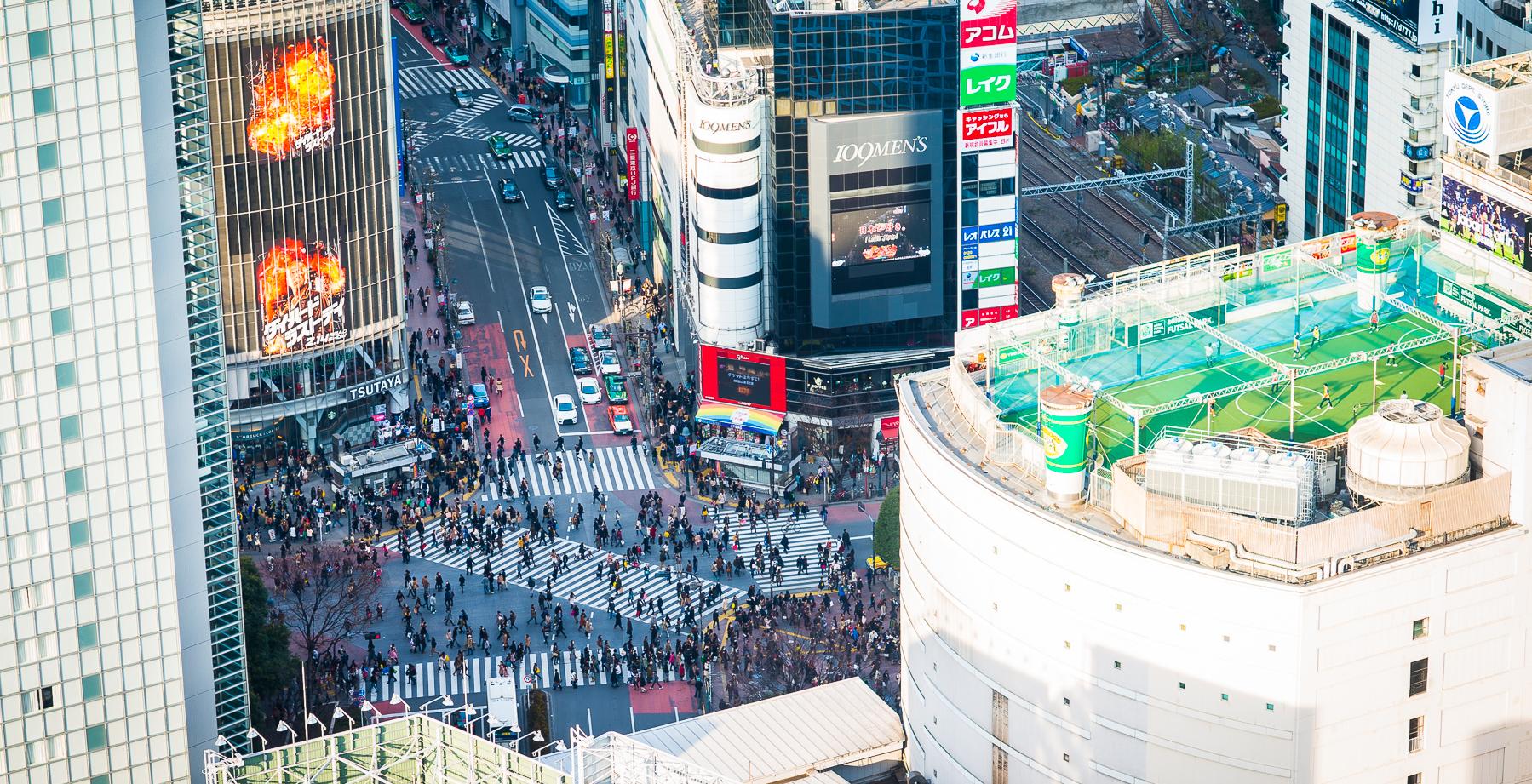
Perched atop the Tokyu department store in the bustling heart of Shibuya, Adidas Futsal Park offers one of the most surreal urban sports experiences in the world. This compact futsal pitch sits high above the city, surrounded by Tokyo’s iconic skyline, neon-lit billboards, and the endless motion of one of the busiest intersections on the planet—the famous Shibuya Crossing. The stadium's unique location gives players the rare opportunity to play five-a-side soccer while being immersed in the energy of one of the world’s most vibrant megacities. Originally built as part of an Adidas promotional campaign leading up to the 2002 FIFA World Cup, the rooftop stadium was intended as a temporary attraction. However, its popularity among Tokyo’s urban athletes led to it becoming a permanent fixture. The pitch is open to the public and is frequently used for casual matches, corporate events, and even youth training programs. With limited space in the city, rooftop sports facilities like this one offer a creative solution for maintaining recreational spaces in high-density areas.
19. The Fjord Stadium: Aker Stadion, Norway

Nestled on the waterfront of Molde, Norway, Aker Stadion is one of the most picturesque football venues in the world. The stadium sits right on the edge of the Romsdalsfjord, offering breathtaking views of the surrounding mountains and the deep blue waters of the Norwegian Sea. The unique location gives fans the surreal experience of watching a match while ships sail past in the background. Home to Molde FK, one of Norway’s top football clubs, Aker Stadion was designed to blend seamlessly with its environment, using modern architecture that complements the natural beauty around it. The open design of the stands allows for maximum exposure to the fjord, making every game a scenic spectacle. During winter, snow-capped peaks create a dramatic contrast to the lush green pitch, making this stadium a dream destination for both football fans and photographers.
20. The Floating Stadium: Marina Bay Floating Platform, Singapore

Taking stadium innovation to new heights—literally—the Marina Bay Floating Platform in Singapore is the world’s largest floating stage, built entirely over water. While it’s primarily used for events, it has also hosted football matches and sports tournaments, making it one of the most unique venues for competitive play. The floating structure is set against the backdrop of Singapore’s iconic skyline, with the Marina Bay Sands and the towering cityscape reflecting off the waters below. The platform is designed to withstand the weight of full-scale sporting events, including military parades and concerts, making it a true engineering marvel. Spectators watch from a nearby grandstand built on solid ground, offering a surreal perspective of athletes competing on a floating field. The Marina Bay Floating Platform proves that stadiums don’t always need land to create unforgettable sporting moments.
21. The Crater Stadium: Estadio Nacional de Costa Rica, Costa Rica

Located in the heart of San José and surrounded by volcanic mountain ranges, Estadio Nacional de Costa Rica is a striking stadium with a view unlike any other. Built within La Sabana Metropolitan Park, the stadium is encircled by the lush greenery and rolling hills of Costa Rica’s Central Valley, giving it an almost crater-like setting. With towering peaks on the horizon, the venue provides a dramatic natural backdrop for international football matches, concerts, and major sporting events. This modern stadium, which replaced an older venue on the same site, is a symbol of Costa Rica’s sporting ambitions. The futuristic, sweeping design of the stadium reflects the country’s dynamic growth while harmonizing with the surrounding natural beauty. On clear days, spectators can even glimpse the distant peaks of Costa Rica’s volcanoes from their seats, making it a stadium that truly embraces the landscape around it.
22. The Vineyard Pitch: Stadio Comunale Druso (Bolzano, Italy)

Nestled in the picturesque South Tyrol region of Italy, Stadio Druso offers a truly enchanting backdrop for football. While it might seem like a typical municipal stadium, its striking feature is the immediate proximity to sprawling vineyards and apple orchards that carpet the surrounding hills. This unique location means fans can often smell the blooming apple blossoms or ripening grapes on a spring or autumn matchday, providing a sensory experience unlike any other. The stadium perfectly embodies the blend of local culture and sport, contrasting the cheers of the crowd with the tranquil beauty of the Italian countryside, making it a surprisingly pastoral setting for professional football.
23. The Abandoned Mine Stadium: Mineirão (Belo Horizonte, Brazil)
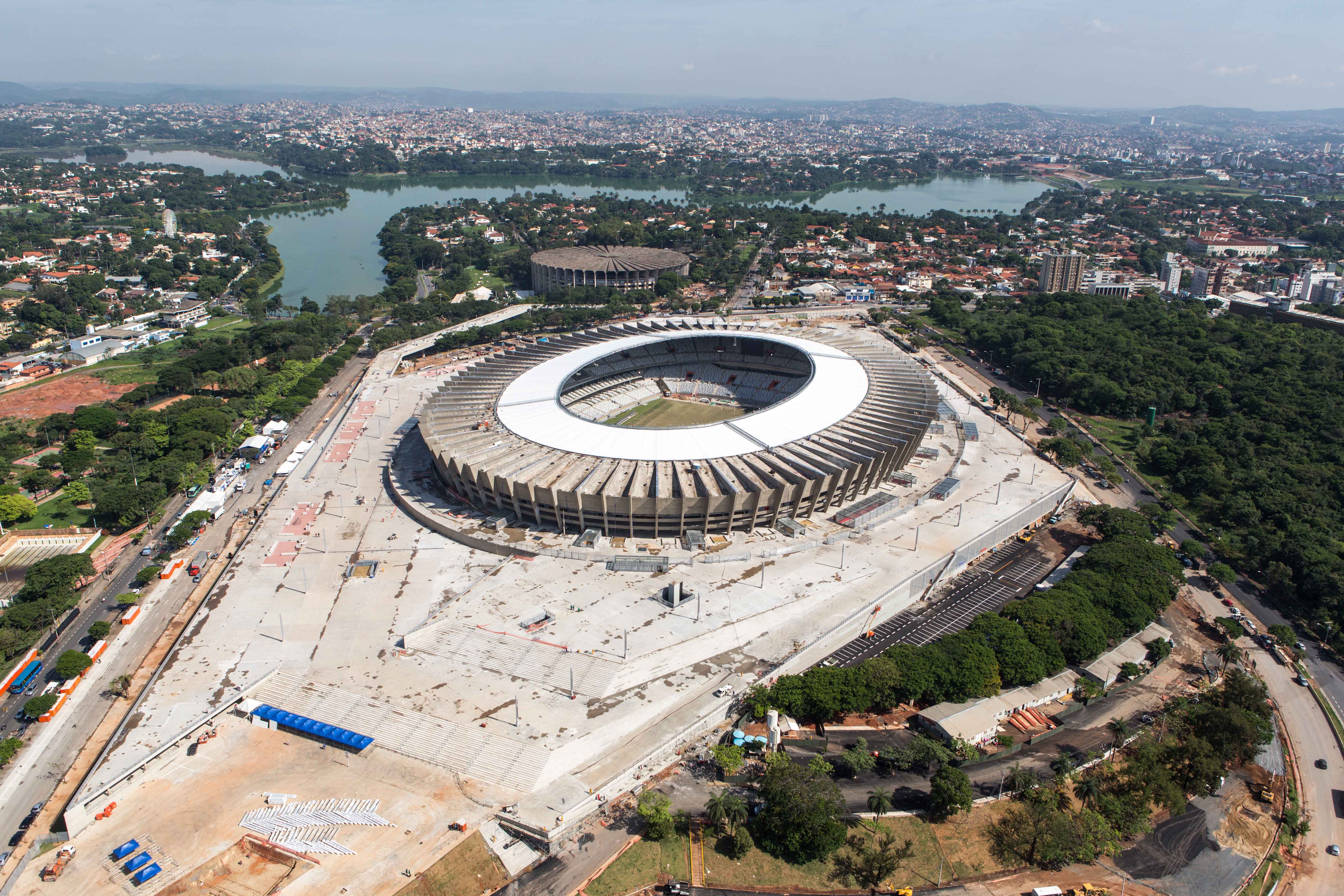
More than just a football stadium, Mineirão in Belo Horizonte boasts a unique and often overlooked history rooted in the very ground beneath it. The stadium was partially built within a former open-pit mine, a colossal excavation site left over from the region’s early industrial days. This means parts of its structure and surroundings are integrated with dramatic, man-made cliffs and terraces from the quarry, giving it an unusual sense of depth and a distinct geological character. This resourceful re-use of an industrial scar transformed a barren landscape into a vibrant hub for Brazilian football, a powerful testament to regeneration and innovation in urban planning.
24. The Underground Arena: Turk Telekom Stadium (Istanbul, Turkey)
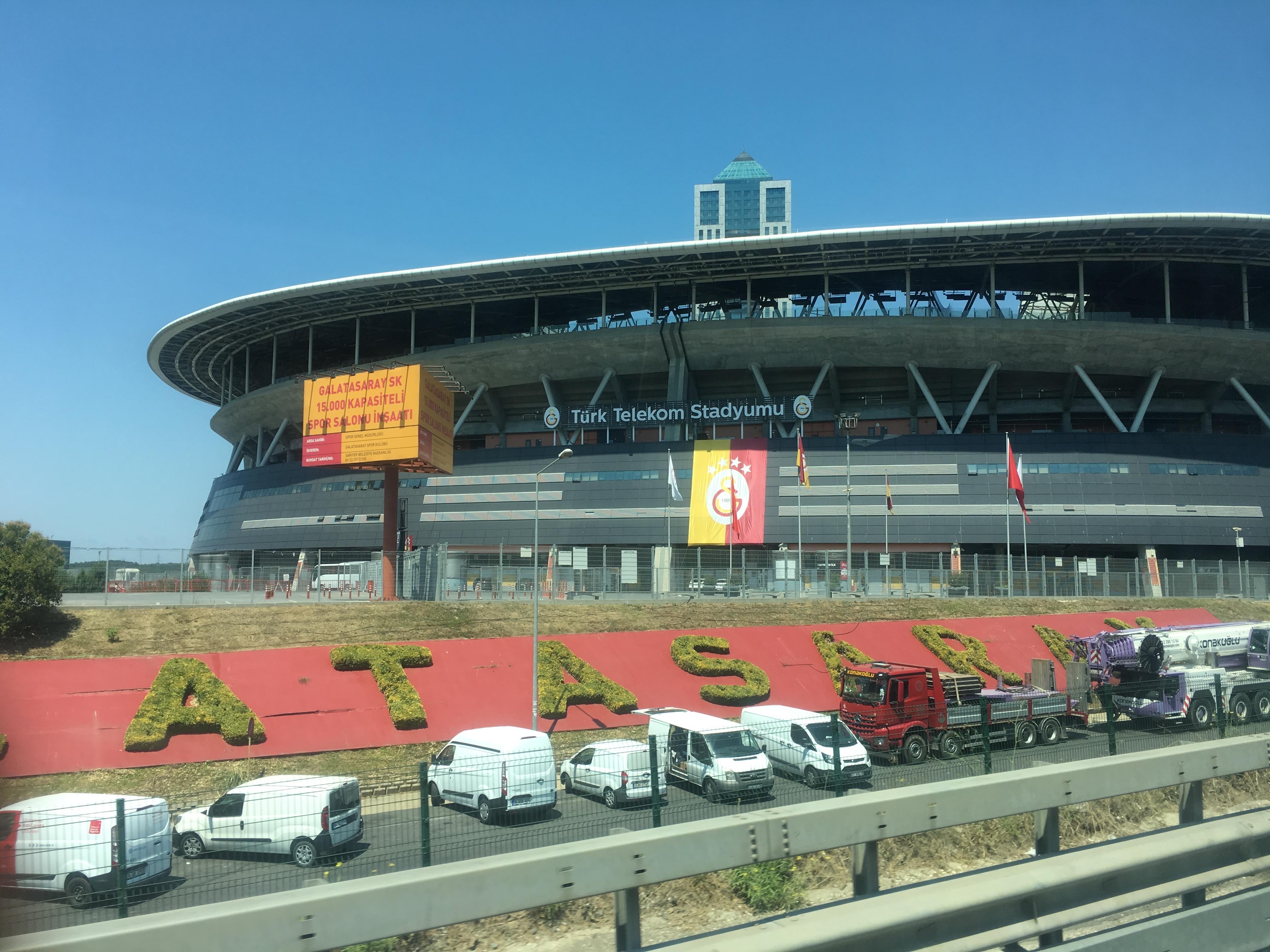
While not entirely underground, Turk Telekom Stadium, home to Galatasaray S.K., incorporates an incredibly intricate underground infrastructure to maximize space in a dense urban environment. Its deepest levels house extensive parking, training facilities, and even a shopping mall, all tucked beneath the main pitch. This subterranean complexity allowed for a larger, more modern stadium footprint than would typically be possible in such a developed area. The stadium's impressive scale and cutting-edge design make it an engineering marvel that extends far beneath the surface, blending seamlessly into Istanbul's bustling metropolitan fabric.
25. The Prison Wall Pitch: Estadio Centro Deportivo Azul (Santiago, Chile)
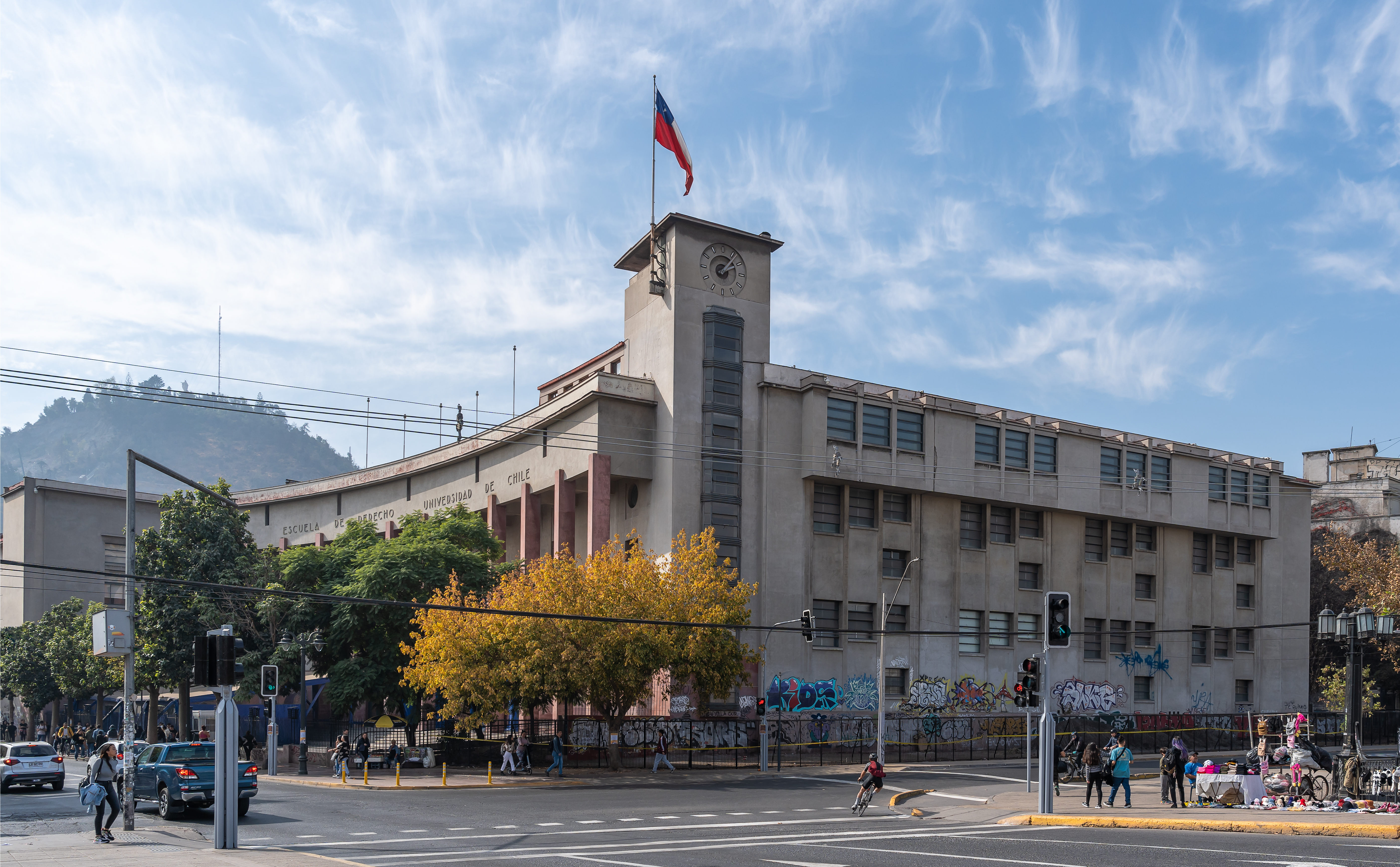
The training ground for Universidad de Chile, Centro Deportivo Azul, has a unique and somewhat eerie neighbor: the infamous former Santiago Penitentiary. The football pitches are literally bordered by the towering, formidable walls of the old prison, creating a stark visual contrast between the pursuit of athletic freedom and a symbol of confinement. This unusual adjacency provides a constant, poignant reminder of the city's history and social landscape, making every training session or youth match feel particularly resonant against such an imposing and historic backdrop.
26. The Dam-Side Stadium: Estadio Ciudad de La Plata (La Plata, Argentina)
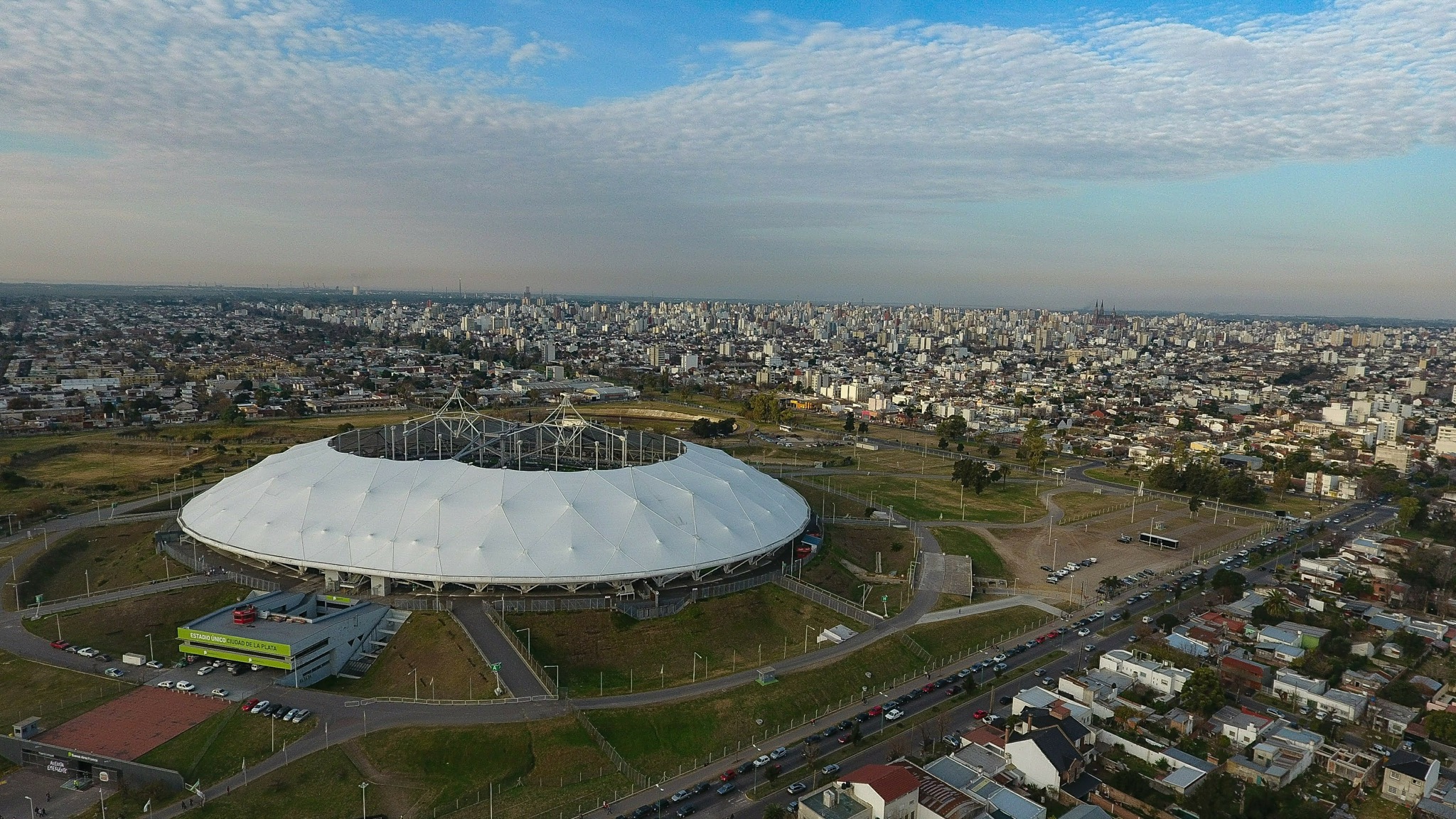
Estadio Ciudad de La Plata stands out not just for its unique "Estadio Único" multi-purpose design, but for its unusual location adjacent to a massive, imposing dam and artificial lake. This positioning means that on one side, fans look out onto a vast expanse of water and concrete infrastructure rather than typical urban or natural scenery. The stadium’s modern, space-age aesthetic starkly contrasts with the utilitarian engineering of the dam, creating a powerful visual juxtaposition. It’s a bold statement on how massive human constructions can interact, even when their purposes are vastly different.
27. The Ancient Quarry Amphitheater: Panathenaic Stadium (Athens, Greece)

While predominantly a historic site today, the Panathenaic Stadium is unique for being the only stadium in the world built entirely of marble and largely excavated from an ancient quarry. Originally constructed for the Panathenaic Games in 330 BC and famously renovated for the first modern Olympics in 1896, its setting within a natural hollow gives it an ancient, almost sacred feel. Its raw, exposed marble seating rises dramatically from the earth, connecting modern athletics directly to their historical roots in a way no other venue can.
28. The Airport Adjacent Arena: Estadio Nacional Julio Martínez Prádanos (Santiago, Chile)
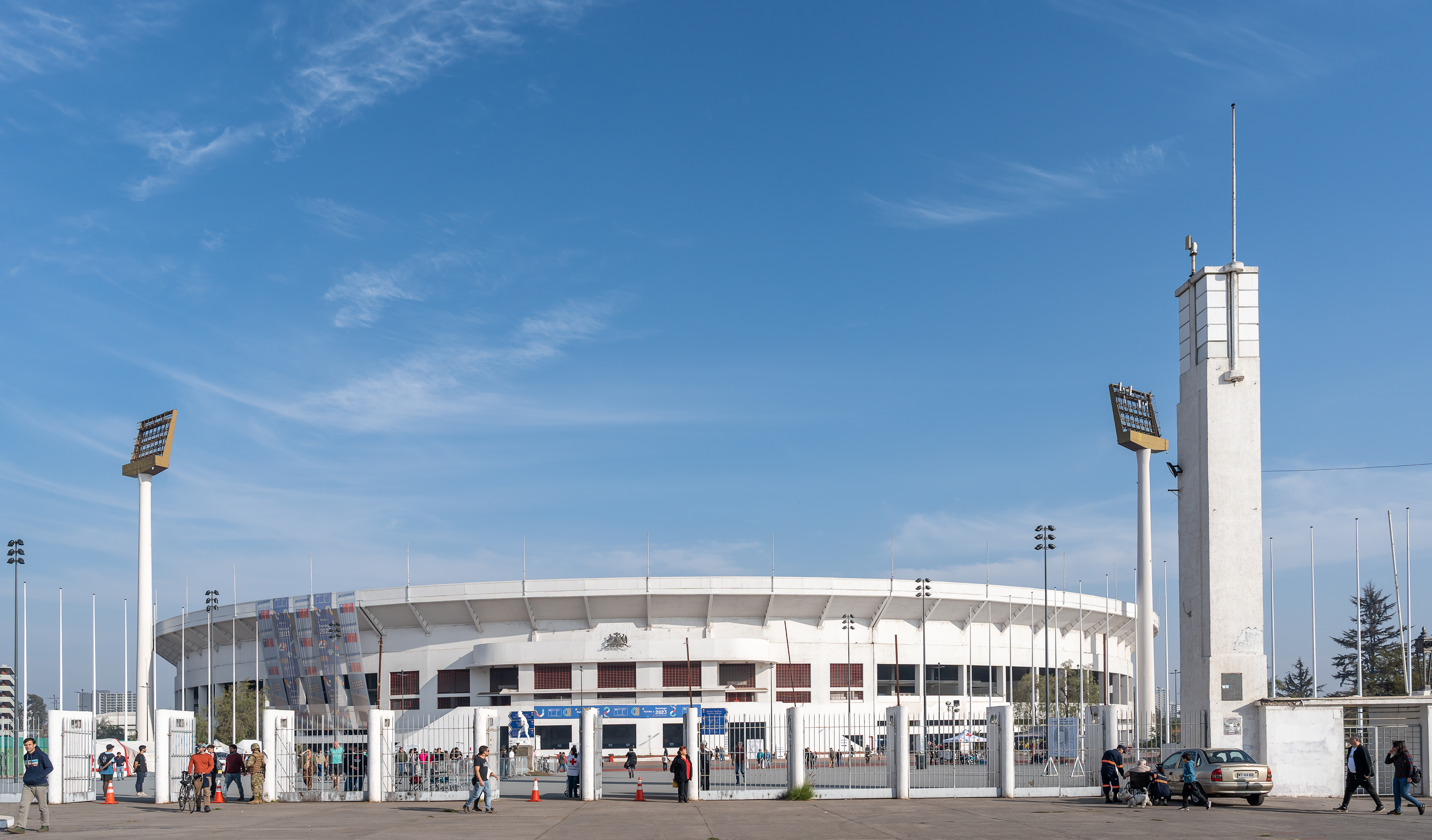
Santiago's largest stadium, Estadio Nacional, has a curious neighbor: its proximity to a major airport. While not directly on the runway, the stadium's location means that during matches or events, particularly those with a lot of noise, spectators often see and hear large commercial aircraft descending or ascending directly overhead. This creates a surreal, often jarring, backdrop for sporting events, merging the roar of the crowd with the rumble of jet engines, a unique urban symphony for football fans.
29. The Rooftop Tennis Court: Burj Al Arab (Dubai, UAE)
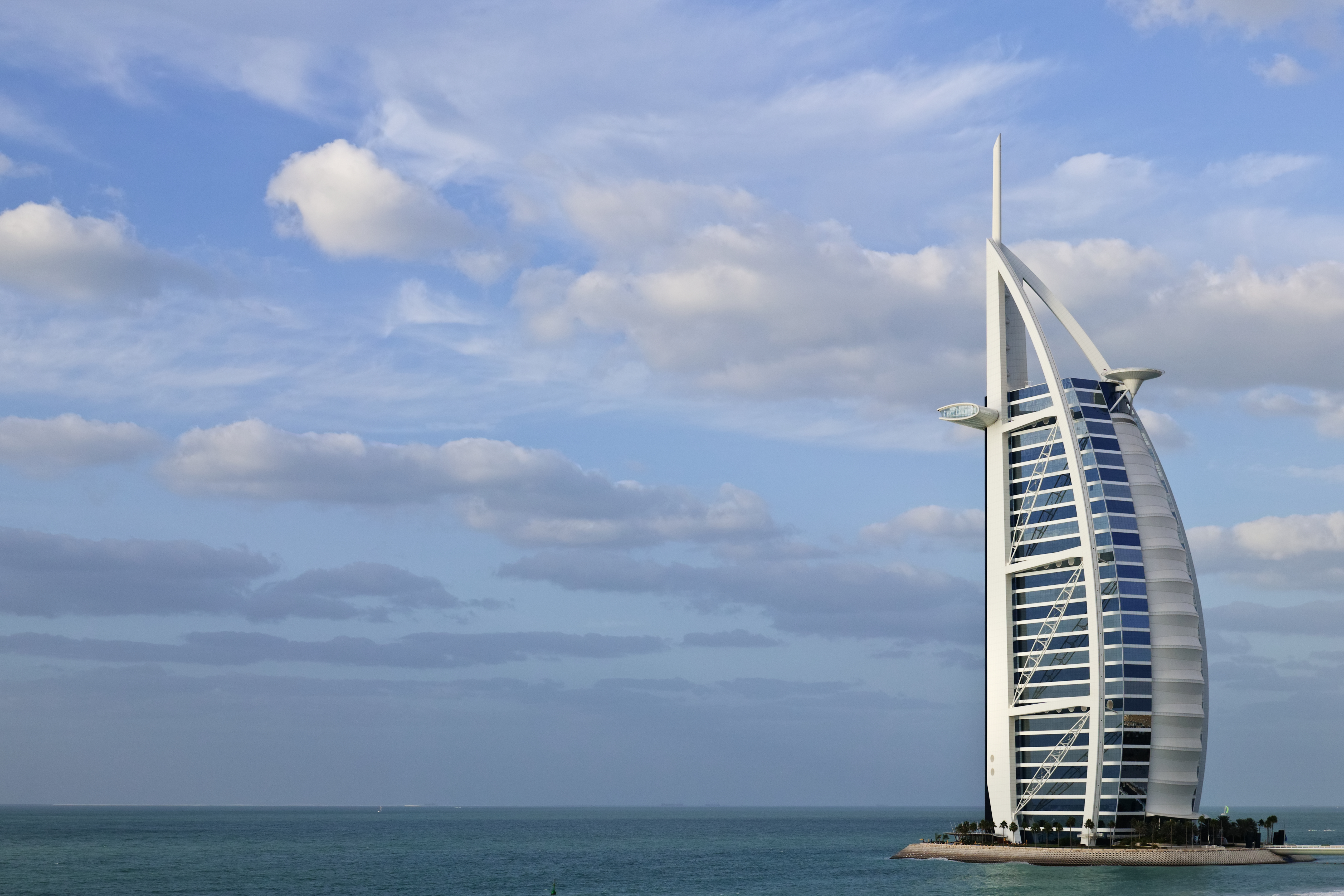
This isn't a traditional stadium, but for its sheer audacity, the Burj Al Arab’s helipad-turned-tennis-court deserves mention. Perched over 650 feet above the Arabian Gulf, this circular green court has hosted exhibition matches featuring tennis legends like Roger Federer and Andre Agassi. The lack of any walls or barriers creates an almost dizzying sense of exposure, with the vast expanse of sea and sky as the only backdrop. It’s less about competitive play and more about showcasing luxury, innovation, and pushing the boundaries of where sport can be staged.
30. The Forest Clearing Stadium: Hrazdan Stadium (Yerevan, Armenia)

Nestled into a natural gorge and surrounded by dense forest, Hrazdan Stadium in Yerevan offers a surprisingly rustic and isolated setting for a large capacity venue. Built in 1970, its concrete bowl emerges from a natural depression, creating a sense of being enveloped by nature despite its significant size. The trees act as a natural amphitheater, contributing to unique acoustics. It’s a remarkable example of how a stadium can be integrated into a natural landscape, almost camouflaged by the surrounding greenery, rather than dominating it.
31. The Floating Basket: National Aquatics Center ('Water Cube') (Beijing, China)
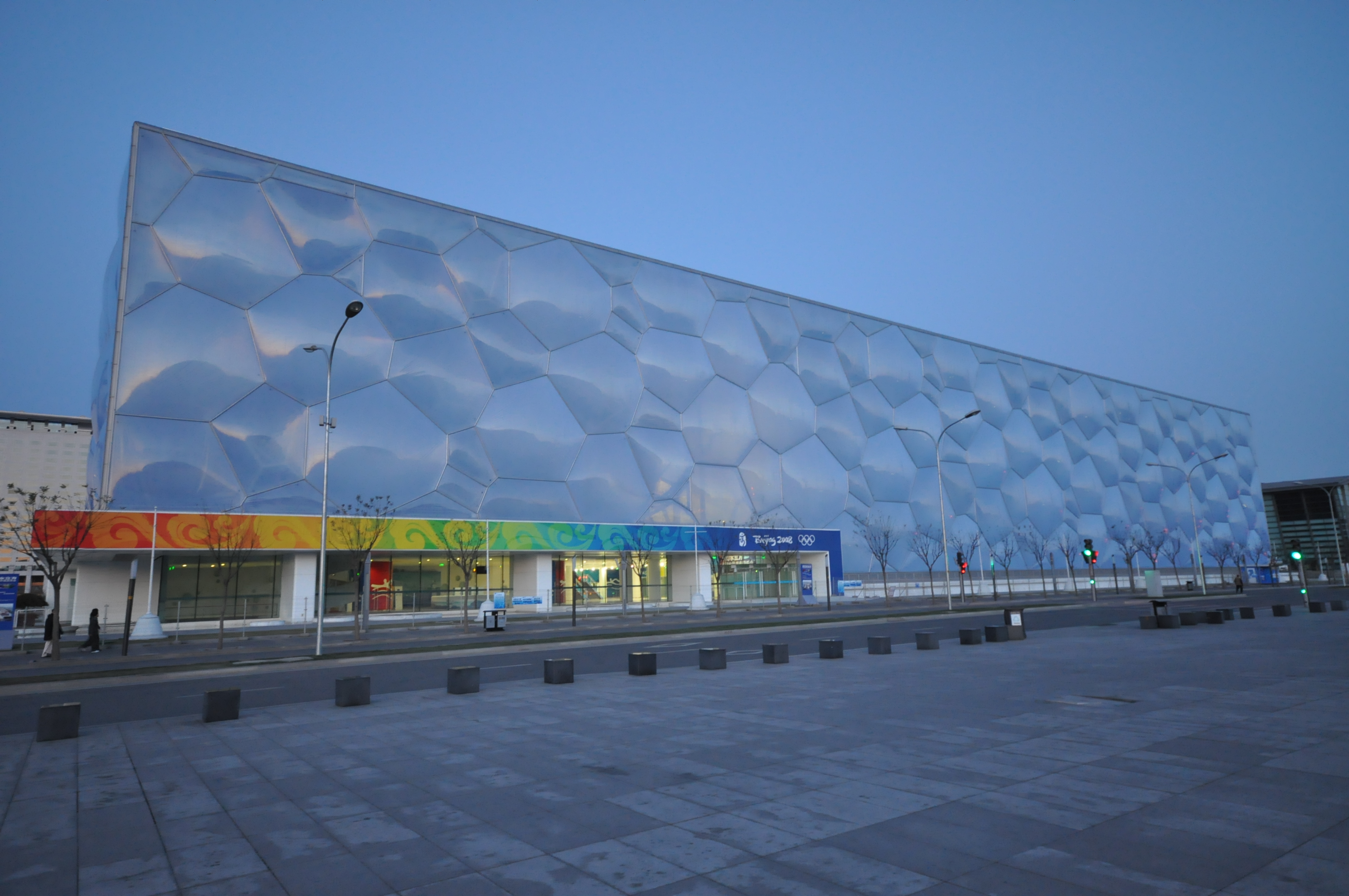
While originally built as an aquatics center for the 2008 Olympics, the 'Water Cube' underwent a remarkable transformation into the 'Ice Cube' for the 2022 Winter Olympics, hosting curling. What makes its location surprising is its perception: designed to look like a structure made of water bubbles, it seems to float ethereally on the Olympic Green, almost weightless. This architectural illusion, combined with its dramatic conversion to host ice sports, showcases an incredible adaptability within a visually stunning, almost liquid, urban setting.
Redefining the Boundaries of Sports Arenas
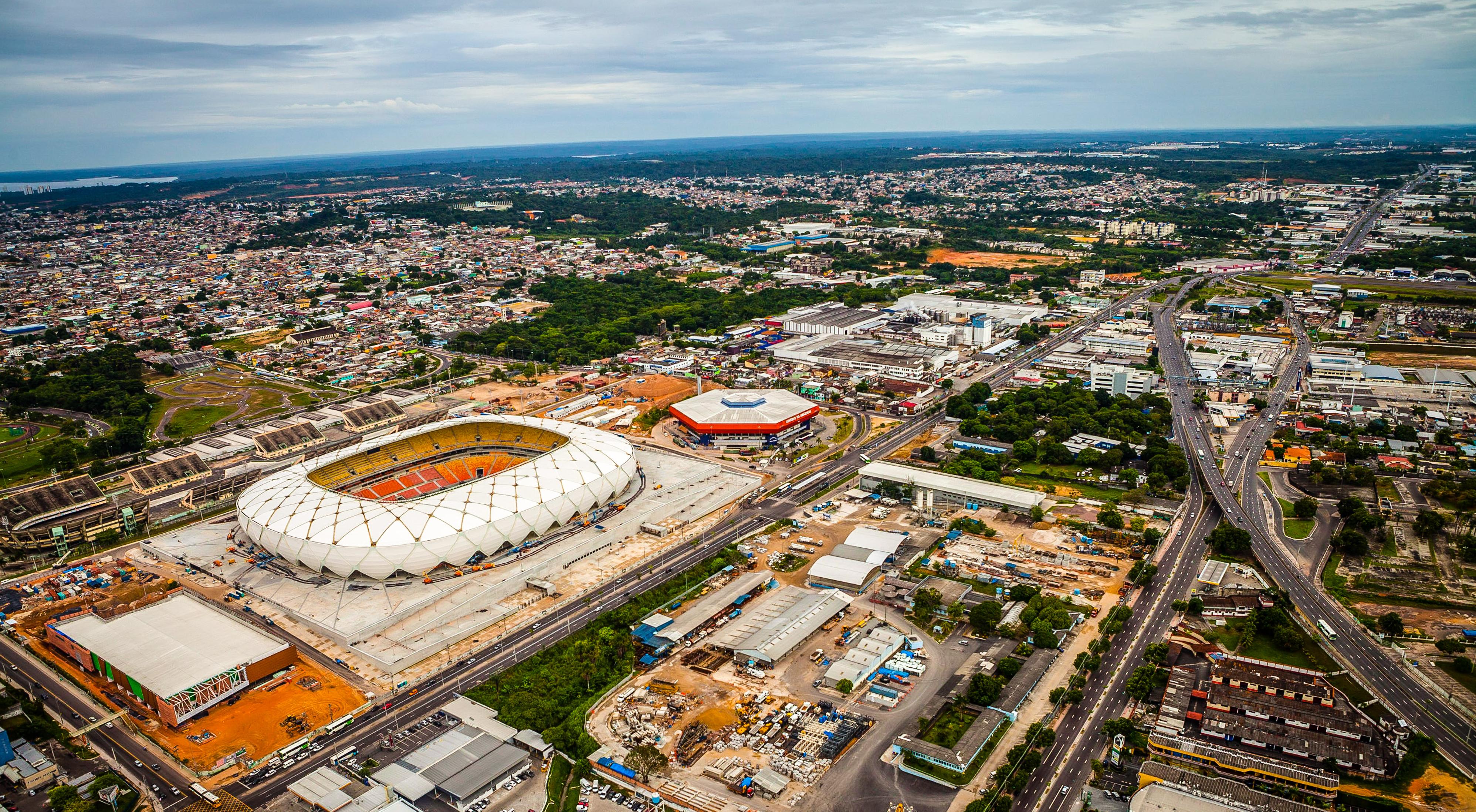
As we have journeyed through these 31 extraordinary stadiums, it becomes clear that sports arenas are not confined by traditional boundaries. From the frozen expanses of Siberia to the tropical paradise of Hawaii, these stadiums redefine our understanding of what a sports venue can be. They challenge us to think beyond the conventional, to see sports as a universal language that transcends geography and climate. These stadiums are more than just places for competition; they are symbols of human ingenuity and passion, each telling a unique story about the power of sports to inspire and unite. As we look to the future, these arenas serve as a reminder that the possibilities for sports architecture are as limitless as the human spirit.








